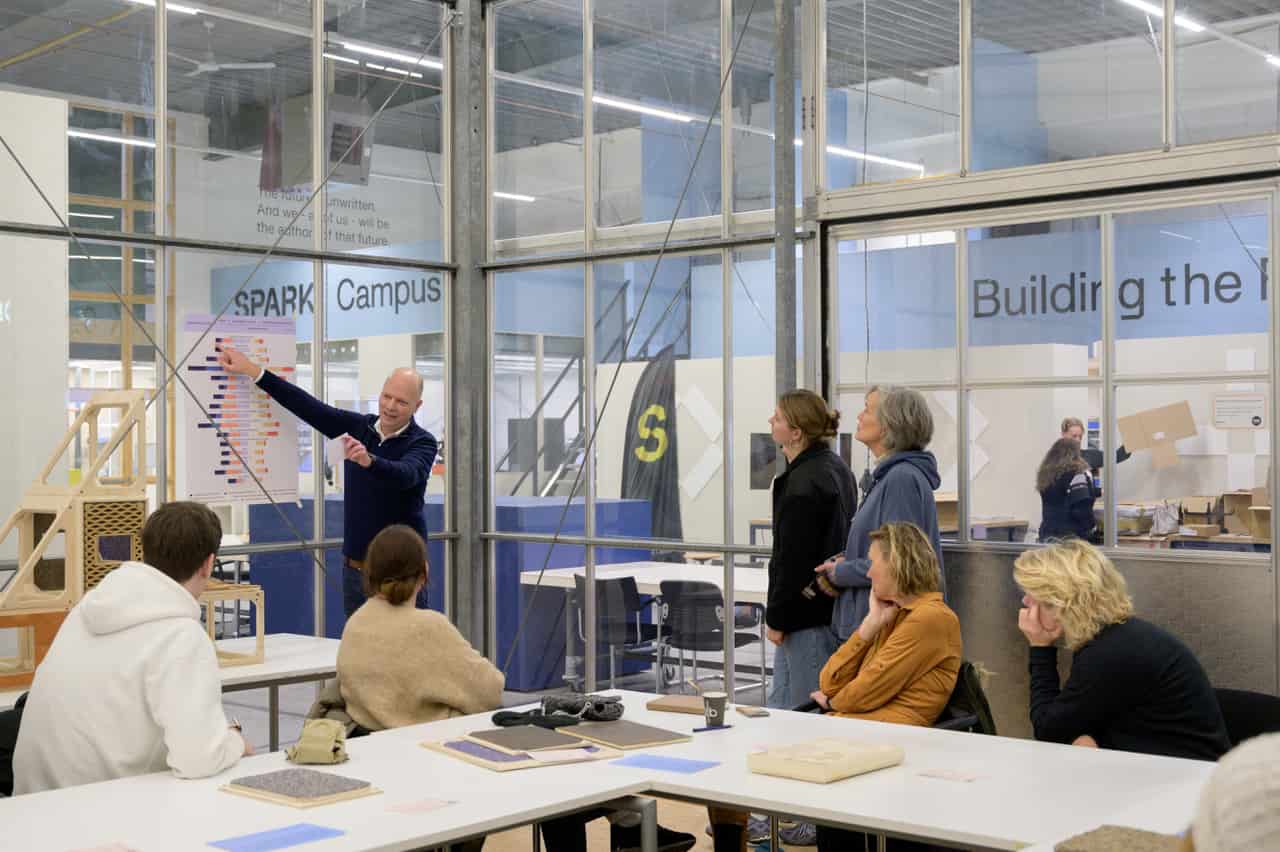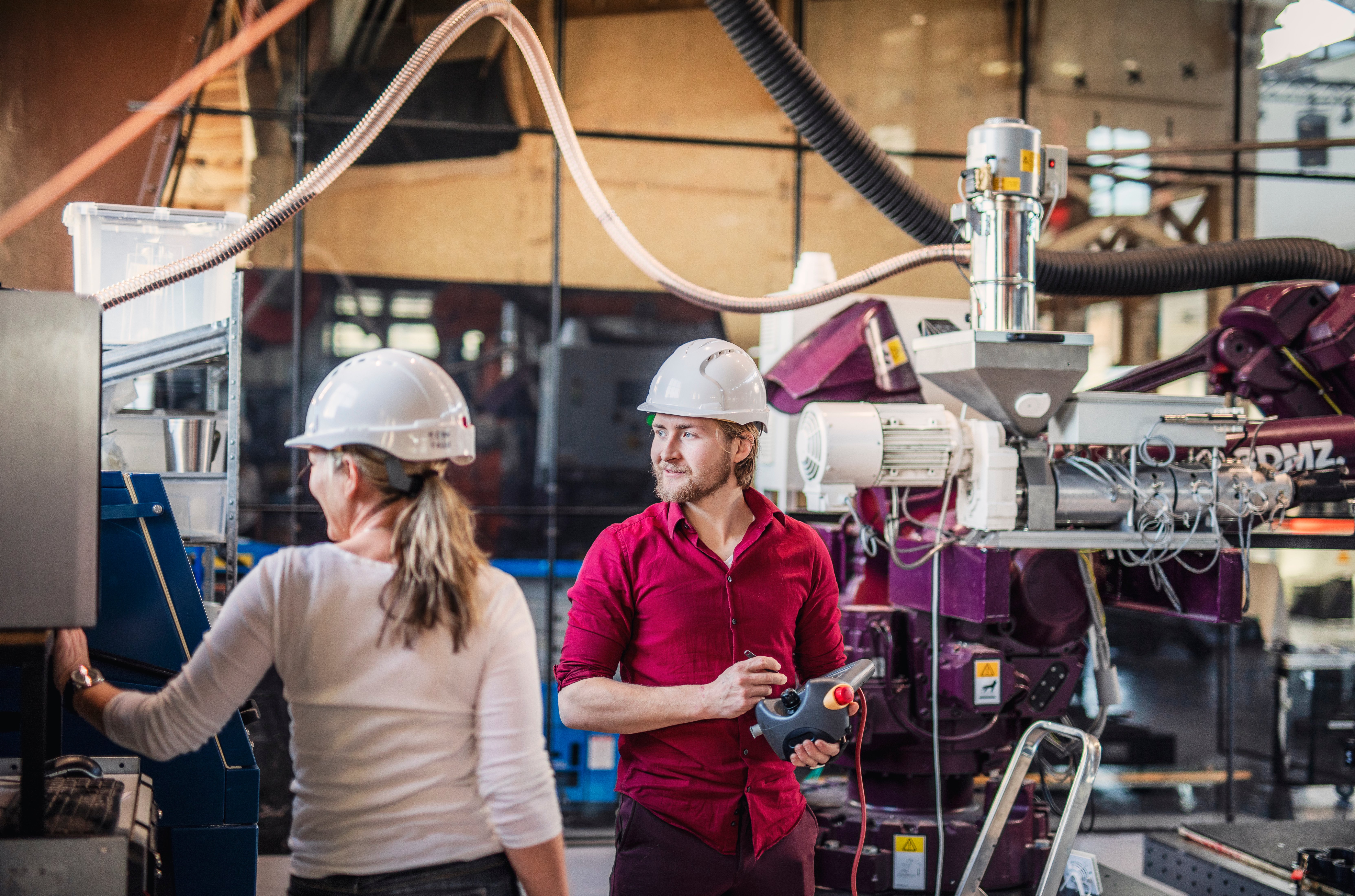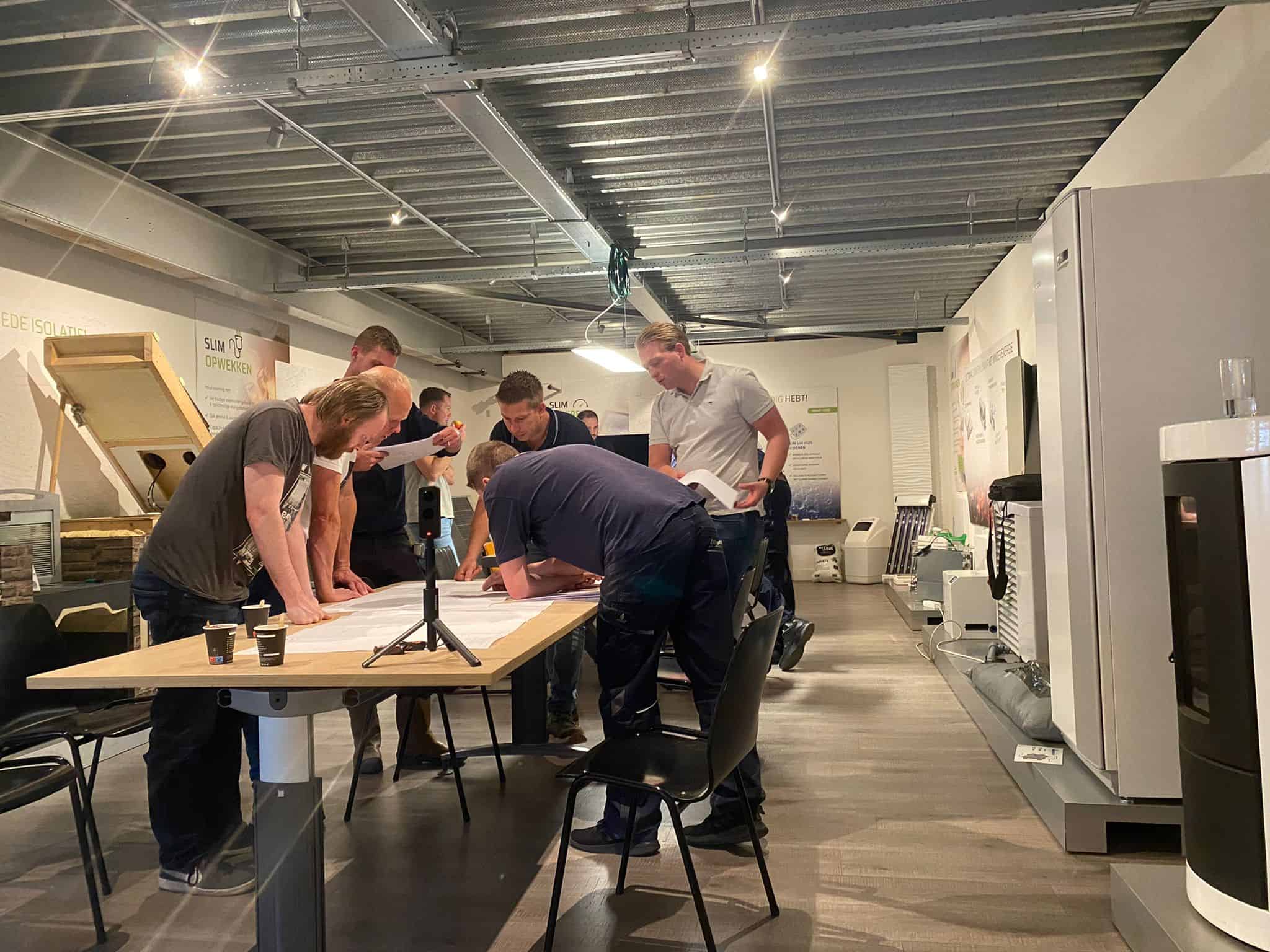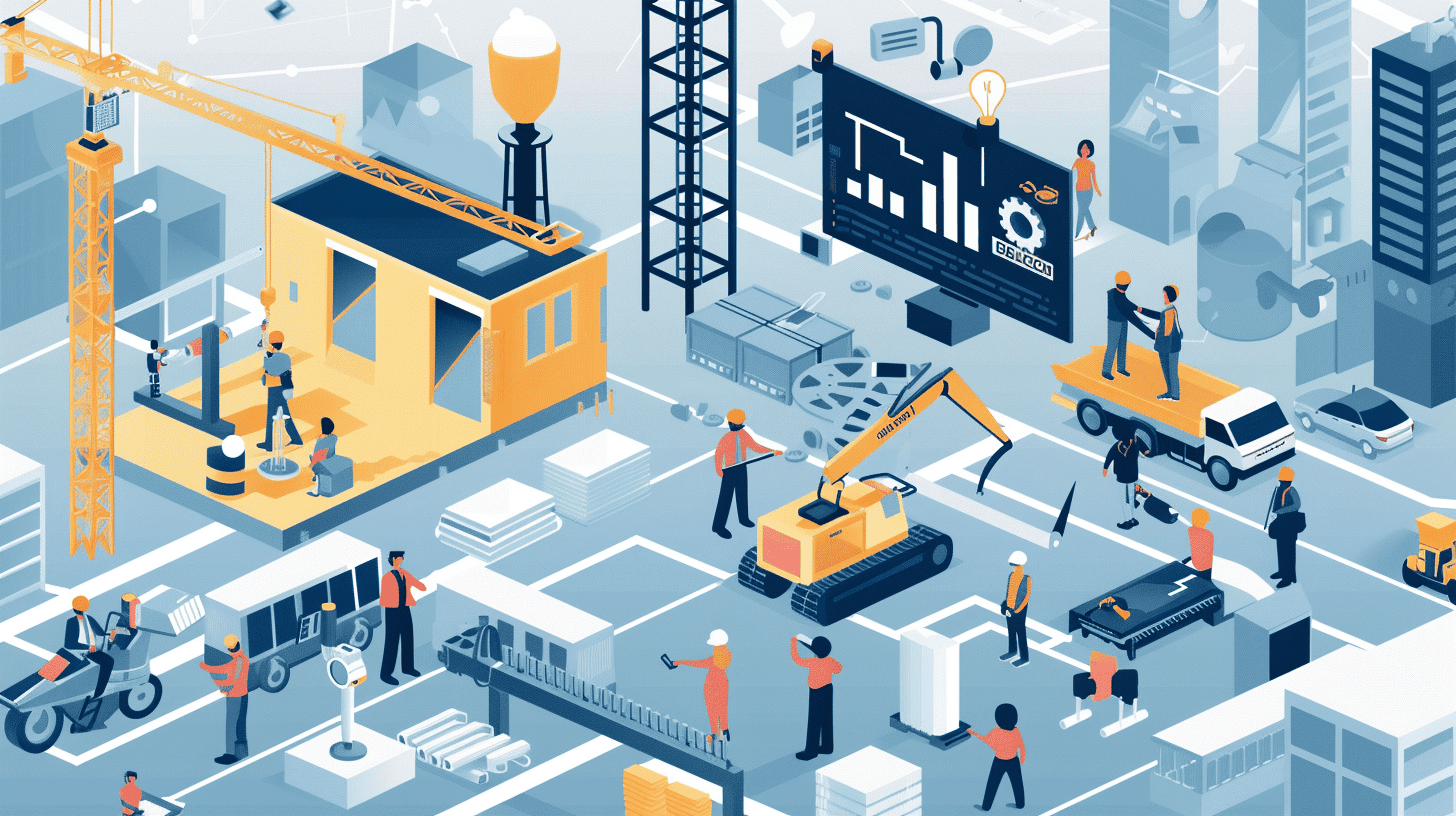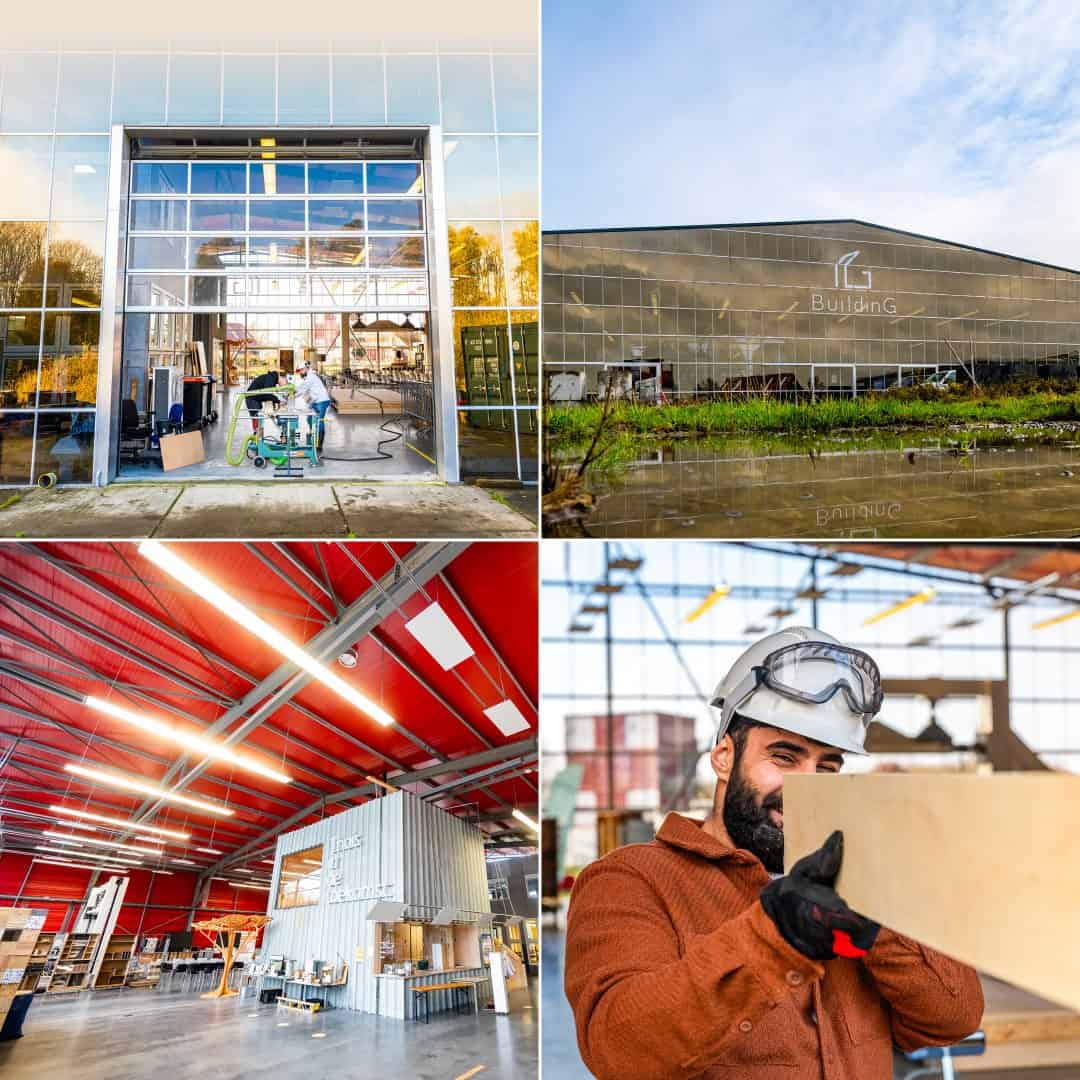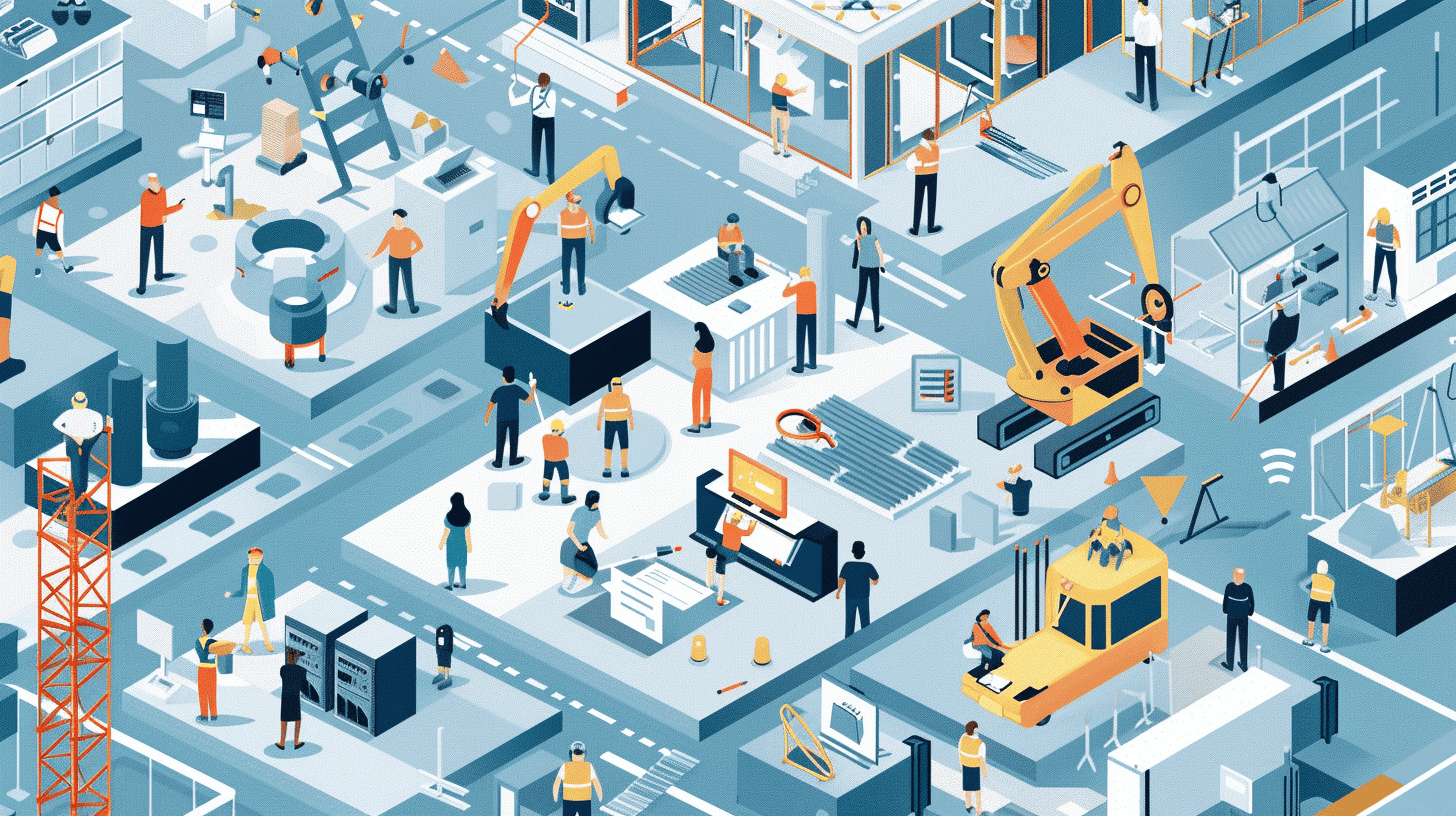
“New technologies and methods only have an impact if people can work with them. It is crucial that professionals acquire the right skills and young people are properly trained. In addition to formal learning, informal learning on the job is especially important. Only then can we make construction more sustainable and achieve the sustainability goals,” says Huub Keizers, strategic advisor at TKI Bouw en Techniek.
People need to accelerate the transition
Currently, the shortage of professionals with the right skills is slowing down the implementation of innovations. “That is a pity because the design, construction, and engineering sector is responsible for about forty percent of emissions in the Netherlands. So it is essential to take steps to reduce them as soon as possible,” Keizers stated.
The program Regionaal Bouwen aan Human Capital
Construction innovates to achieve a sustainable, circular, and future-proof living environment. With the emergence of new technologies such as artificial intelligence, 3D printing, and sustainable concrete, the construction industry is in transition. For these innovations to land successfully in practice, professionals need new skills. With the Regionaal Bouwen aan Human Capital program, TKI Bouw en Techniek, the Top Consortium for Knowledge and Innovation, aims to accelerate the development of these skills among current and future professionals. An essential part is the development of a scalable regional approach around Human Capital. After over a year, the program in its current form is ending. In this series, we take stock of the program and ask the parties involved, including four regional Hubs (North, East, South, and West), about the main results.
This first article delves into the program’s content and structure. We dive into the methodology behind the program as well.
Sharebouw & Techniek
The Sharebouw & Techniek concept, developed by TNO, is at the heart of the program. The goal is to accelerate skills development and innovation adoption by connecting working, learning, and innovation in powerful regional ecosystems with a connection to national players. “Today, the worlds of learning, working, and innovation often do not connect well. In education, young people receive information that does not match well with business practice. And science develops innovations that are not easy to implement. By connecting these worlds, we can accelerate innovation,” explains Goedele Geuskens, a researcher at TNO who is closely involved in the development of Sharebouw & Techniek.
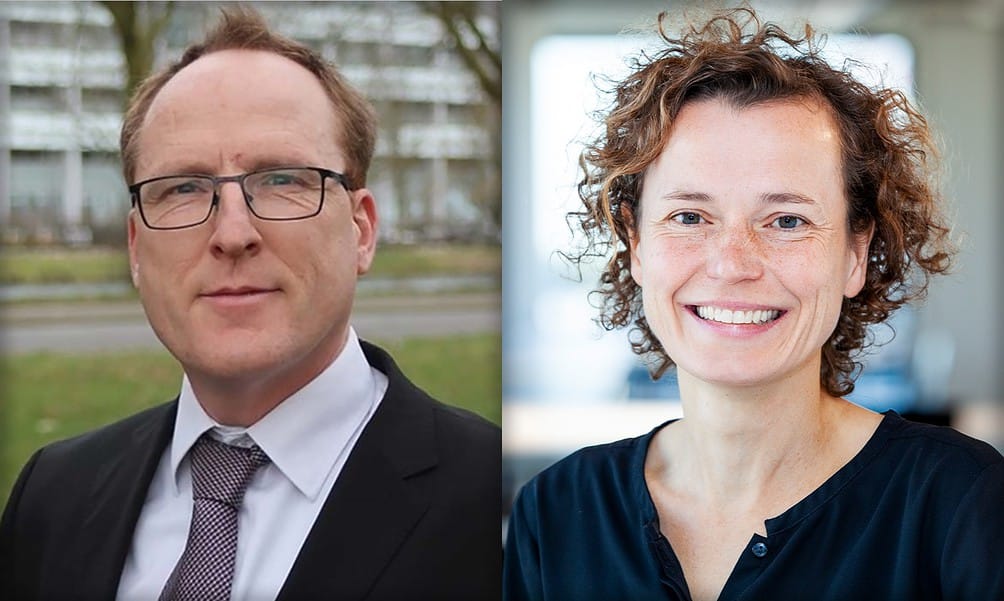
Regional networks indispensable
Why is a regional approach necessary to accelerate the adoption of innovations? “A significant part of the labor market is regional. In construction, for example, many family businesses work in the region. They need to be able to see up close the impact of certain innovations. An online picture of a new, biobased material does not say much. Companies themselves indicate that professionals who get their hands on a 3D-printed element become excited to apply this product in their work. By seeing it with their own eyes and experimenting with it, entrepreneurs and professionals get a much better idea of the possibilities,” Geuskens said.
Four regional hubs in the north, south, east, and west of the Netherlands participate in the program. These hubs were already operating in skills development and innovation and have joined the program to grow further. Together, they are developing a scalable regional human capital approach while at the same time paying attention to regional differences and needs. For example, Hub North has a lot of focus on bio-based building and earthquake-proofing the built environment. In Hub West, digitization in the supply chain is central. The hubs exchange the acquired knowledge and approaches developed to learn faster. As a result, the program has taken the first steps toward a sustainable infrastructure focused on human capital.
Sharebouw & Techniek
The Sharebouw & Techniek method accelerates skills development and application of innovations by carrying out activities on the following lines:
- Learning community: parties from business, learning, and innovation domains share knowledge and build new knowledge together by taking up challenges.
- Technological and social innovation: Understanding and developing technological and social innovations, such as new working methods.
- Learning organizations and value chains: Strengthen learning and innovative behavior and cooperation in the chain so that innovations can succeed. For example, a micro-learning community with various partners has been established.
- Innovation in learning and development: Innovation in education, both in content and form. For example, there is more focus on challenge-based learning with real-world assignments.
- Innovation adoption and scaling up: Strengthening the adoption of innovations and scaling up.
“The method’s strength lies in combining coherent activities across all lines. We now often see projects on separate pillars, such as research or education. But precisely combining innovation, skills development, and working in practice accelerates the application of innovations,” says Geuskens. In addition, improved practices have been developed within the various pillars. Keizers adds, “The program is jointly funded. That is unique; often, the funding is for one of the components, which means that implementation in the chain and within the broader ecosystem does not happen or is only delayed.”
Connecting the whole chain
Geuskens and Keizers outline that the entire value chain must be connected for the program to succeed and make a real impact. That means involving knowledge institutions from colleges to universities, large and small companies, housing corporations, and governments at various levels. A total of 380 different parties have now joined the network. “Innovative, large SMEs play an important role. Small SMEs are difficult to draw in these kinds of projects. They do not always have the manpower, time, and resources to work on them, but they are an important part of the sector,” says the researcher.
For this reason, Keizers believes it is important to teach students about sustainability, new work processes, the possibilities of digitalization, and industrial construction. “A significant number of the students will be working for an SME in four years. So, they take these insights with them into the business world. This may not be a short-term solution, but it will certainly affect the innovative power of such companies in the future. Moreover, the industry is dealing with an aging workforce, which makes recruits even more crucial.”
Looking back on last year’s program, Geuskens and Keizers see that an impact has already been made on the skills development of students and professionals. In addition to technological skills, they mention soft skills. Geuskens: “For example, professionals indicate that they learn how to cooperate better in the value chain and how to design an innovation process.”

Impact on businesses
The program – focused on human capital – also directly impacts business in the Netherlands. Geuskens: “We see companies taking steps in digital working through the regional approach. From Hub North, a showcase was carried out, from plant to building, in which flax was grown and processed into building elements. Partly because of this project, seventy farmers from the region are now studying how to grow flax and how to close the loop – including production. The impact of the program extends far beyond the skills.”
The program is nearing completion, but the contacts remain. Keizers: “Because of this program, we became one of the partners mbo-raad – the organization behind secondary education vocational training, ed. – refers to for human capital. That increases the long-term impact of the initiative. In addition, the hubs will continue to work together for at least the next two years, including in the TKI Bouw en Techniek’s Future-proof Living Environment program. In doing so, we will also look at how the knowledge can be further shared to regions that are currently not yet connected.”




